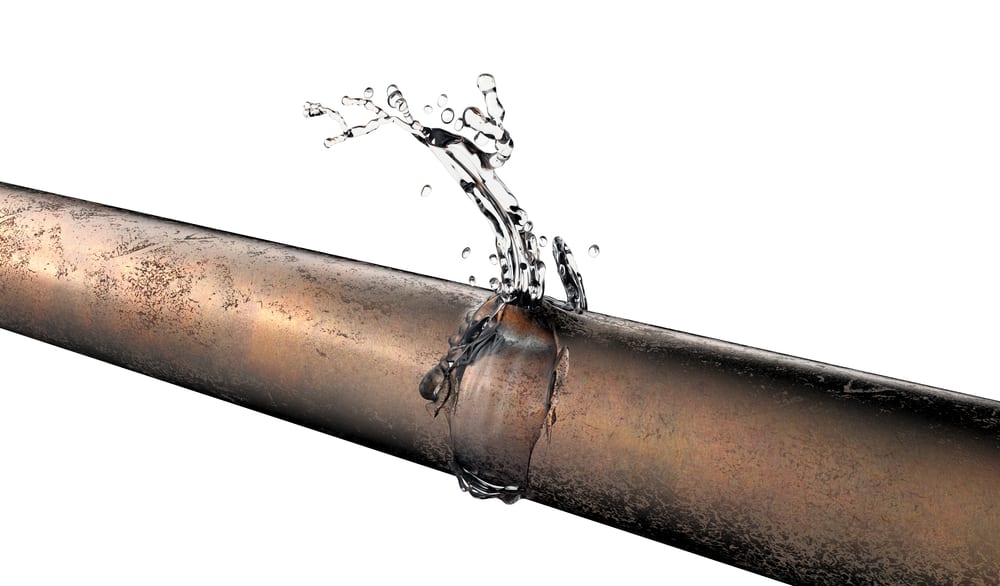Exactly how to Examine If Your Home Has a Concealed Leakage
Exactly how to Examine If Your Home Has a Concealed Leakage
Blog Article
What are your thoughts concerning Top leak detection hacks?

Early discovery of leaking water lines can minimize a possible disaster. Aside from conserving you money, it will decrease the worry as well as stress. The minute you locate a leak, calling your plumber for repair work is the most effective solution. However, some little water leaks may not show up. Right here are some hacks that help if you can not detect it with your nude eyes.
1. Examine the Water Meter
Every house has a water meter. Examining it is a surefire way that aids you uncover leakages. For beginners, turn off all the water resources. Ensure no one will certainly purge, make use of the tap, shower, run the washing machine or dish washer. From there, go to the meter and also watch if it will certainly change. Considering that no person is utilizing it, there should be no movements. That shows a fast-moving leakage if it moves. If you detect no changes, wait a hr or 2 as well as examine back once again. This implies you may have a slow-moving leakage that could even be below ground.
2. Examine Water Intake
If you find abrupt modifications, in spite of your intake being the exact same, it suggests that you have leakages in your plumbing system. A sudden spike in your expense indicates a fast-moving leakage.
On the other hand, a constant rise each month, despite the very same behaviors, shows you have a slow-moving leak that's likewise slowly escalating. Call a plumber to completely check your residential property, especially if you feel a warm area on your flooring with piping underneath.
3. Do a Food Coloring Test
When it comes to water consumption, 30% comes from bathrooms. If the shade in some way infiltrates your bowl throughout that time without flushing, there's a leakage in between the container as well as dish.
4. Asses Exterior Lines
Don't neglect to check your outdoor water lines too. Should water leak out of the connection, you have a loose rubber gasket. One tiny leakage can waste tons of water and surge your water bill.
5. Inspect as well as Assess the Scenario
Property owners ought to make it a behavior to inspect under the sink counters and even inside cabinets for any kind of bad odor or mold growth. These two warnings indicate a leakage so punctual attention is needed. Doing regular inspections, also bi-annually, can conserve you from a significant problem.
Examine for discolorations as well as weakening as a lot of appliances and pipes have a life expectations. If you believe dripping water lines in your plumbing system, don't wait for it to escalate.
Early detection of dripping water lines can alleviate a possible calamity. Some little water leaks may not be visible. Checking it is a surefire way that aids you find leaks. One small leakage can throw away loads of water and surge your water bill.
If you believe dripping water lines in your plumbing system, don't wait for it to escalate.
How to Know If Your Home Has a Hidden Leak
Water Meter Reveals Inexplicable Water Usage
If you’d like to test whether or not there’s a leak somewhere in your home, you can do this using your water meter. Here is how to conduct the test:
Don’t use any water in your home for at least 30 minutes; this also means not turning on faucets or water-using appliances.
Go outside, and check your water meter for activity.
If your water meter shows that there was activity, even though no one was using any water, this proves that there is a leak in your home.Visible Mold or Mildew Growth
Leaks behind walls create moist, dark environments that allow mold and mildew to grow and thrive. Eventually, you might see mold growth forming on the wall closest to a hidden leak.
If mold is growing in an area that receives a high amount of moisture, such as a bathroom, it may simply be an indication that better ventilation is needed. However, if you see mold growth on a wall or the ceiling in an area where you would not expect, you probably have a hidden leak.
Musty, Mildew Odor
Sometimes you might not be able to see the mold or mildew that is growing as a result of a leak. However, the smell can give the problem away just as easily. If you catch a whiff of something musty, there’s a good chance that old water is collecting somewhere in your home that you can’t see.
Stained/Warped Walls, Ceilings, or Floors
When your home soaks up water, a variety of red flags can become visible, including ceiling stains, bubbling drywall, warped walls, and sagging floors. While these issues can be caused by excess humidity, they can also be signs that a pipe or plumbing connection has started leaking behind your walls.
Inexplicably High Water Bill
After a while, you get a general sense for what your water bill should be. If you own a pool or sprinkler system, your bill will tend to be higher during summer. However, if you receive a water bill that seems especially high, and you can’t figure out what caused it, then you may have a hidden leak somewhere that’s increasing your bill.
https://www.plumbingjoint.com/blog/2019/july/how-to-know-if-your-home-has-a-hidden-leak/

Do you enjoy reading about Leaking water lines? Make a short review further down. We would be interested to hear your opinion about this page. Hoping that you come back again in the near future. Please set aside a second to promote this write-up if you enjoyed reading it. We recognize the value of reading our article about Detecting hidden plumbing leaks.
Report this page